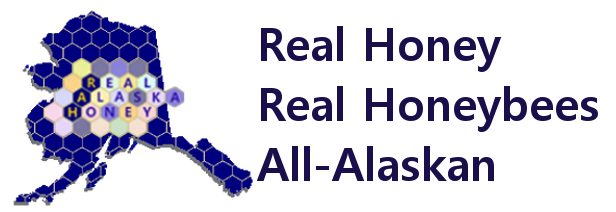When friends find out that I keep bees, many – most – are fascinated, and some express an interest in keeping bees themselves. April is a busy time, and I have to admit, I like to talk about beekeeping, so I will occasionally mention to friends what is going on with the bees… and right now, I am setting my hives up for new package bees, which arrive in early April.
If you are one of those people who wants to start keeping bees, and you’re eager and motivated, and today is the first day of spring, you still have time to start this year. But not a lot!
There are four things you need to get started: a location to keep them, a hive, personal equipment, and package bees.
Location:
In Alaska, bees do pretty well in urban locations. But not all urban locations are the same. A reliable, sunny southern exposure is very important. Access to basic flowers is important, too; the most important are willow, dandelion, clover and fireweed. Fruit trees are also good. Note: when I say access, that doesn’t mean that you have to have those plants on your property. Bees forage quite widely, so a couple neighbors with an apple tree or two, a lawn full of dandelions and white clover, and roadsides with ample fireweed would be ideal. Most urban locations in Anchorage have some or most of that. While it isn’t a dealbreaker, your proximity to the ocean is a bit of a negative, because it tends to cool things down, which affects the number of hours each day that the bees can efficiently forage. Locations further from the water, for example, East Anchorage, Wasilla, Palmer, Willow, etc. tend to have more favorable microclimates than West Anchorage.
I am not suggesting that beekeepers, particularly new beekeepers, locate their bees as close to their home as I do – Mine are in my driveway, and family members frequently walk through flights of bees. There are obvious risks with that. However, for the most part, bees tend to be quite gentle as long as they are not experiencing some sort of stress. My reason for bringing this up is that a sunny spot in your back yard where you can see them (they are relaxing to watch) is probably good enough. Almost every city lot in Anchorage is big enough, if you have the other things, too.
Hives:
If you’re starting today, contact a local supplier of beekeeping equipment, and order a starter hive. It is great that you might be handy with a table saw, but bees are quirky when it comes to their homes, and a newbie mistake in contruction can make a great start a dismal failure. Let an expert make your first hive (and your second, it is a great idea to have two when you start).
The reason you should have (at least) two hives is because many problems that you have with your hive can be solved by moving frames from one hive to another. You have to have the frames to move, hence two hives. A second reason is that new beekeepers tend to want to look into their bees frequently. It is a hard habit to break, and there are lots of interesting things to see when you look inside. Having two hives will allow you to satisfy your curiousity without pestering your bees every day. Remember what I said about bees and stress? Daily peeks inside is too much. Weekly is about right.
Personal Equipment
Here is the bare minimum that you’ll need:
- a veil
- beekeeper gloves
- thick, light-colored or white sweatshirt and pants
- duct tape
- a hive tool
- proper medicines to address allergic reactions (more below)
Nice to have:
- Bee brush
- smoker
All of the above (except the medications) are available from a variety of sources online.
While I have never had an allergic reaction to bees, I do have a number of drugs onhand in the event that I or someone else has a reaction. Since I am not a physician, I am not going to advise you on what you should get. However, you should consult your physician, and consider some of the many over the counter remedies that are effective for allergies.
Package Bees
Package bees are, well, packages of bees. Each package contains between 3 and 5 pounds of bees, and typically one queen, which is in a cage inside the package. There are about 4000 bees to a pound. You can still order package bees. The first deliveries arrive in mid April.
You’re probably wondering what you do next. There is lots of information online, and plenty of local expertise. If you’re going to do it, find someone local to help you out… but don’t wait, now is the time!
Most of what you’re looking for can be found locally at these two websites:
Hive equipment, personal equipment, package bees: Sarah’s Alaska Honey
Package Bees: Alaska Honey Bee
